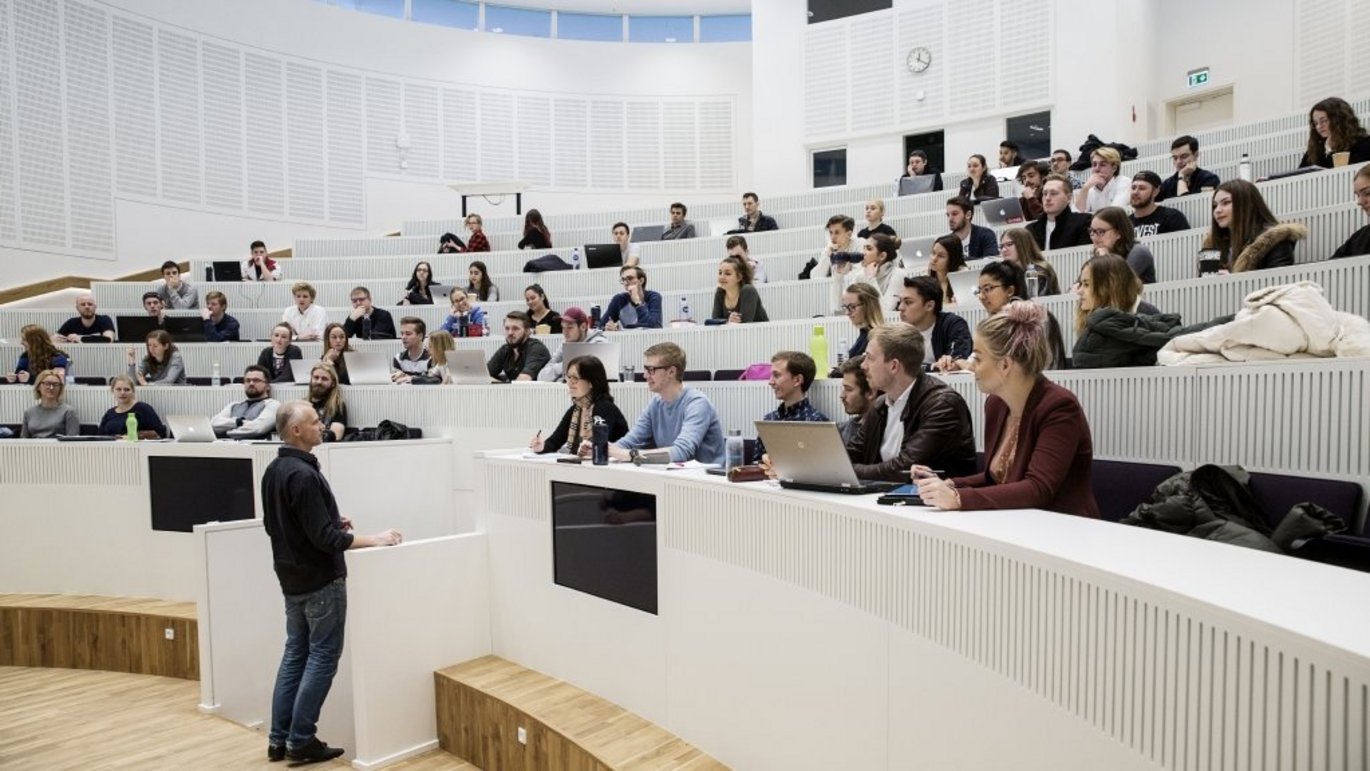Are you teaching for the first time? InTeL will prepare you
'Introduction to Teaching and Learning' is an online course for newly appointed teachers and experienced professionals, who are new to teaching. The course introduces a range of topics in teaching and learning broadly, but also offers the opportunity to delve into subject-specific disciplines – from lectures and classroom instruction to laboratory and clinical teaching.


The content of the course 'Introduction to Teaching and Learning' (InTeL) is, as the name suggests, a basic introduction to teaching elements such as feedback, alignment, and student-centred learning. In addition, you can delve into themes such as lectures, supervision, and online teaching.
“With InTeL, we provide a basic introduction to teaching and learning. The course is aimed at teachers across career levels, fields of study, and teaching activities,” explains Anders Hjortskov Larsen, development consultant and InTeL course leader.
The course is designed to be highly flexible in terms of time, place, and pace to suit any teacher's busy schedule. There are no fixed meeting times, as the course is conducted asynchronously and online.
Solid foundation in a wide range of disciplines
The course is guided by online moderators – so-called e-moderators. Their role is not to convey the syllabus in the classical sense, but to guide and moderate the learning process of the participants. In the team there are always e-moderators representing each of the university's faculties.
The teaching materials in InTeL are prepared by experienced teachers, researchers, and educational developers from the CED in collaboration with the university's own experts in the respective subjects:
“The idea of InTeL is that the offer should have relevance across the entire university. All content is developed by experts in the topics and peer-reviewed,” explains Anders Hjortskov Larsen.
For new teachers in all respects
The course familiarises participants with central concepts and methods for improving the quality of teaching, such as alignment, active learning, learning objectives, educational IT, exams, and assessment. This makes it relevant for the less experienced teachers, says Anders Hjortskov Larsen:
"The target audience for InTeL is new teachers at Aarhus University or experienced professionals, who are new to teaching. In practice, this means that there are many postdocs and the like, but even more senior hospital physicians and lawyers who would like to be prepared for the role of part-time lecturer."
A module in other teaching contexts
Some teachers may already have become familiar with InTeL in other contexts. As the course provides basic knowledge, it has been used as an introductory module in other courses held by the CED. Each semester there are around 200 teachers who read and work with the exercises from InTeL.
“The content is used as a foundation in several different contexts. For example, we use some elements as building blocks for Science Teaching, which is a course for PhD students at Natural Sciences and Technical Sciences. In addition, we use it as part of an onboarding project for new teachers at Health, among others. Parts of the course are also used in courses for English-speaking instructors. We can do this because it is flexible content that, with a few tailor-made adjustments, can be placed in different contexts,” explains Anders Hjortskov Larsen.
Five-step content and peer feedback
The course is in English, held in Brightspace, and consists of five steps. In each stage there are activities associated, such as a quiz, video, or assignment, in which you must contribute and at the same time address the contributions of the other participants.
The five steps of InTeL are:
- Organisation of teaching
- Student work
- Themes
- Lesson plan
- Evaluation
“The course is based largely on active participation and peer feedback in discussion forums, where participants can exchange ideas about teaching with each other. During the course, the participants will be able to work with and develop their own teaching, as well as be inspired by the lesson plans of fellow course participants. This inspiration can be rewarding and motivating,” says Anders Hjortskov Larsen.
Six themes adapted to the teaching contexts of the participants
The third stage of the course is an elective module, where you choose a relevant teaching style as a starting point for your later work on the lesson plan.
“This means that a clinical teacher can read subject material about clinical teaching, a teacher who will be doing a lot of supervision can immerse themselves in this form of teaching, and a teacher who will be teaching online can prepare themselves with a theme about online teaching,” says Anders Hjortskov Larsen.
You can delve into the following six themes:
- Lecturing
- Small-class teaching
- Laboratory teaching
- Supervision
- Clinical teaching
- Online teaching and learning
After you have gone through the InTeL course, you will have developed a concrete lesson plan that you can use in your own teaching.
Signing up for InTeL and more info
The InTeL course runs over one week in February and September each year. You can find more information about the course and sign up here.
If you need more information, please contact Anders Hjortskov Larsen at ahlarsen@au.dk or by phone +45 42 31 87 04.
Just got a new colleague? Then feel free to tip them about the course.
